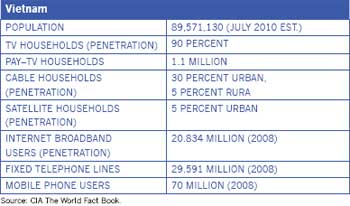
Vietnam Television remains the dominant force in media entertainment in Vietnam. The growth in cable and satellite TV combined with an almost blanket coverage in an industry dominated by state-owned stations. But channel diversity by the major broadcasters has been a key feature as the focus on niche markets grows. 









